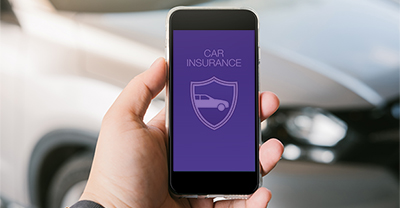What is no-fault insurance?


0 min. read
Following a car accident, one of the first questions you’re inevitably asked is “Whose fault was it?” In many states, the answer to that question plays a key role in resolving auto insurance claims. But in some states, the identity of the driver who was at fault has no bearing on certain claim payouts. These are often referred to as no-fault auto insurance states.
If you live in a no-fault auto insurance state and you’re injured in an accident, you can file a claim with your own insurance provider. They’ll evaluate the claim and, assuming it falls under the limits of your policy, reimburse you for injuries and related expenses—regardless of whether you or the other driver caused the accident.
Is no-fault insurance the same as personal injury protection (PIP)?
Broadly speaking, yes. And actually, the fact that these two terms are often used interchangeably has probably contributed to a lot of confusion regarding what “no-fault insurance” means.
Personal injury protection (PIP) auto coverage can help pay for reasonable and necessary medical expenses—and certain other expenses—for injuries you and other insured individuals sustain in a covered accident. PIP isn’t available in all states.

Learn the differences between medical payments and PIP auto insurance coverages.
What does no-fault auto insurance cover?
No-fault insurance can help pay for medical bills, income loss, and other related expenses you and/or your passengers incur following a covered accident—even funeral expenses, in some cases.
Keep in mind that you may need to pay your deductible before the coverage goes into effect following an accident.
What doesn’t no-fault auto insurance cover?
No-fault auto insurance is only available to those who qualify as an insured person under the policy, and only pays for certain expenses from accident-related injuries. It doesn’t cover those seeking additional compensation for things like pain and suffering related to the injury.
In most no-fault states, it also doesn’t pay for vehicle or property damage—yours or anyone else’s—following an accident. Depending on the circumstances of the accident, one or more of the following coverages would apply:

Get a free auto insurance quote today.
Do I need no-fault auto insurance?
That depends on where you live. Some states require drivers to carry no-fault insurance (amongst other coverages) on their policies, some states make this coverage optional, and some states don’t allow it at all.
States where no-fault auto insurance is optional
In addition to the 12 states* that require no-fault auto insurance, drivers can purchase optional PIP coverage in the following states and districts (as of February 26, 2024):
Washington D.C.
Get Dairyland® auto insurance
We provide auto insurance policies to drivers in 38 states, and we have decades of experience helping drivers like you find affordable car insurance—whether or not you need no-fault insurance. Interested in getting a free quote? Click below to get started.

The general information in this blog is for informational or entertainment purposes only. View our blog disclaimer.
*Data accuracy is subject to this article's publication date.










